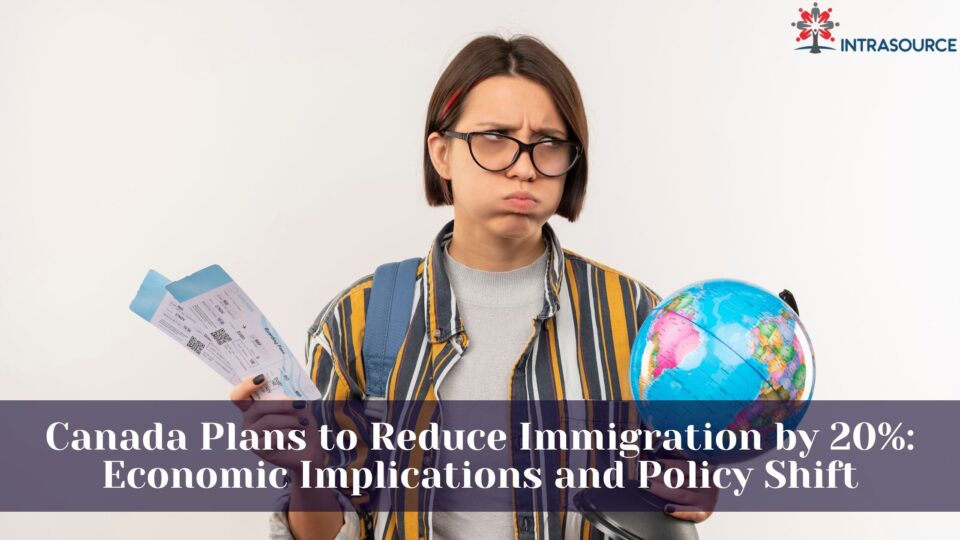In a surprising policy shift, Canada is set to reduce its immigration intake by 20% over the next three years. This move marks a departure from the nation’s historical approach to fostering economic growth and addressing labor shortages through welcoming immigrants.
Reasons Behind Canada’s Immigration Reduction
On October 24, Prime Minister Justin Trudeau’s government announced plans to cut immigration levels, primarily due to the infrastructure strain imposed by rapid population growth. Canada’s population increase, likened to adding a city the size of San Diego each year, has put significant pressure on housing, employment, and public services. With a population of around 40 million, the surge has led to increased housing prices and an uptick in unemployment rates.
Public sentiment has shifted dramatically. A recent survey by the Environics Institute highlighted that nearly 60% of Canadians now view current immigration levels as excessive, a stark rise from the previous 27% in 2022. This growing concern has pushed Trudeau’s administration to make adjustments, especially with the opposition Conservative Party gaining traction ahead of the 2025 elections.
Impacts on Labor Supply and Economic Growth
Canada’s decision to decrease immigration could significantly impact labor supply and economic growth. The country’s economy had been benefiting from an influx of immigrants, particularly in sectors such as housing, retail, and telecommunications. However, the rapid pace of arrivals began exceeding Canada’s capacity for integration.
This reduction strategy may also affect GDP per capita negatively—a leading indicator of living standards—and has already shown signs of consecutive declines. Younger adults and recent immigrants are most vulnerable to these economic pressures.
Canada’s Immigration Structure
The Canadian immigration system consists majorly of two categories:
- Permanent Residents: These are selected via a points-based system considering factors like education level, language proficiency, and professional experience. Traditionally, they have constituted a significant part of Canada’s citizenry and economic migrant pool.
- Temporary Residents: This category includes international students, foreign workers, and asylum seekers—groups that previously contributed less to population growth but have surged recently due to more accessible work visas.
By placing caps on temporary residents such as international students and workers, Canada’s policy aims at reducing this burgeoning pool substantially.
A Debate on Future Immigration Policies
This strategic pivot raises questions about Canada’s long-term economic resilience and its identity as an open society committed to multiculturalism. How these changes will play out over time remains a pivotal concern not just for policymakers but also for businesses reliant on a diverse workforce.
Trudeau’s Immigration Reduction Plan
In a move aimed at addressing challenges presented by high immigration levels, the Canadian government has announced plans to enforce stricter controls on both permanent and temporary residents.
Starting in 2025, Canada plans to lower the intake of new permanent residents to 395,000, a reduction from 485,000 in 2023. This policy introduces an unprecedented cap on temporary residents as well, targeting a 20% decrease over the subsequent three years. This cap will encompass limitations on student visas and restrictions on foreign labor, designed to alleviate pressure on housing markets and public services. By 2027, these measures are expected to curb population growth to 0.8%, a stark fall from the recent annual growth rate of 3%.
Economic Implications of Immigration Cuts
Although the revised immigration policy aims to stabilize job availability and housing affordability, it carries economic risks. Predominantly driving Canada’s labor force expansion, immigration is vital for long-term economic health. A deceleration in immigrant numbers might hinder economic growth and potentially rekindle inflationary pressures due to labor shortages.
Canada’s historical reliance on immigration has supported consumer spending—a crucial factor in mitigating potential recessions amidst aggressive interest rate policies enforced by the Bank of Canada. Thus, reducing immigration could shrink the labor pool and limit economic advancement.
Finding Equilibrium Between Public Sentiment and Economic Imperatives
The decision to reduce immigration levels is partially influenced by increasing public dissatisfaction, yet it may jeopardize long-term economic steadiness. Being central to maintaining Canada’s labor force vitality, any substantial decrease may detract from productivity and overall growth.
Immigration Minister Marc Miller highlighted the necessity for striking a balance in addressing these concerns. Nonetheless, analysts caution that reduced labor force expansion might adversely affect sectors like healthcare, construction, and technology—all heavily reliant on skilled migrant workers—and decrease consumer spending which could hinder economic recovery efforts.
While Trudeau’s administration seeks to tackle present challenges through this new policy framework, its broader economic aftermath remains uncertain. Successfully navigating between population control measures and fostering economic growth will be crucial to determining these policies’ eventual outcomes.


